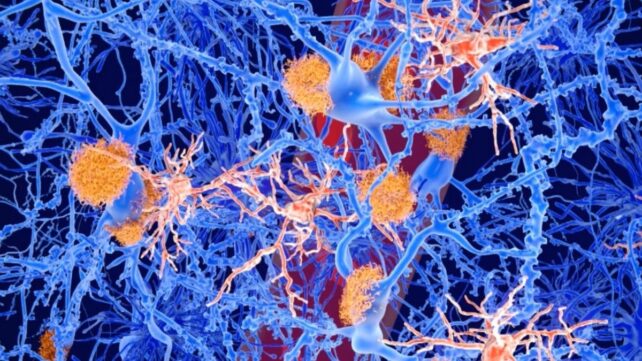A new chemical compound has shown promise for treating Alzheimer's disease. Its effects in a rat model of the disease were impressive, and the biochemists who discovered it are eager to progress to in-human trials.
A hallmark of Alzheimer's disease is the accumulation of beta-amyloid plaques in the brain. And while it's still unclear whether these plaques cause the disease's symptoms, or are merely a side-effect, they remain a major research focus for treatment.
Given that current treatment options for Alzheimer's extend only to symptom relief, the race is on to find drugs that may actually tackle the disease from its roots.
Related: Scientists Found 2 Existing Drugs Can Reverse Alzheimer's Brain Damage in Mice
The new compound works by stripping excess copper out of the harmful beta-amyloid plaques in the brain.
"About a decade ago, international studies began to point to the influence of copper ions as an aggregator of beta-amyloid plaques," explains biochemist Giselle Cerchiaro from Federal University of the ABC (UFABC) in Brazil.
"It was discovered that genetic mutations and changes in enzymes that act in the transport of copper in cells could lead to the accumulation of the element in the brain, favoring the aggregation of these plaques. Thus, the regulation of copper homeostasis [balance] has become one of the focuses for the treatment of Alzheimer's."

Copper accumulation isn't always an issue for Alzheimer's patients: some actually experience a deficit of the essential metal in their brains. But for those who do have an excess, scientists have long suspected that returning the brain's copper levels to normal could help improve some symptoms, especially brain damage from oxidative stress.
The team tested which compounds in a set of nine could best pull the copper from brain plaques. These compounds – eight imines (organic compounds containing a carbon-nitrogen double bond) and one quinoline-based – were first put through a virtual, 'in silico' experiment, which revealed two of the imines (which the researchers labelled as L09 and L10) and the quinoline-based compound (here dubbed L11) as suitable candidates for treatment.
The computer test suggested these three compounds should be able to pass the blood-brain barrier (an essential hurdle for any in-brain therapy) and could potentially be given to patients as pills to swallow.
Next, mouse brain cells grown in a lab were exposed to each of the three candidate compounds for 24 hours, to test their toxicity. Compound L11 did the most damage to cells and showed signs of exacerbating oxidative stress: not a good sign.
Meanwhile, L09 and L10 showed relatively low toxicity, while also protecting the cells' lipids and DNA from damage usually associated with the oxidative stress that accompanies beta-amyloid buildup.

With all that established, it was time to test the compounds in an animal model of Alzheimer's, achieved by injecting rats with streptozotocin to kill off their insulin-producing beta cells, and causing their brains to accumulate clumps of beta-amyloid.
These experiments identified compound L10 as a leading candidate for future in-human clinical testing. As well as restoring normal levels of copper in the hippocampus (the brain region best known for its role in short- and long-term memory), the compound also significantly reduced neuroinflammation and oxidative stress. The rats treated with this compound also performed much better in a maze activity designed to test their spatial memory.
By comparison, compounds L09 and L11 had a much weaker impact in all measures.
Cerchiaro and team are keen to move forward with clinical tests, which will give a clearer idea of how viable this treatment might be for human Alzheimer's patients, of whom there are an estimated 55 million worldwide.
"It's an extremely simple, safe, and effective molecule," Cerchiaro says. "The compound we've developed is much less expensive than available drugs. Therefore, even if it only works for part of the population, since Alzheimer's disease has multiple causes, it'd represent a huge advance over current options."
This research is published in ACS Chemical Neuroscience.
